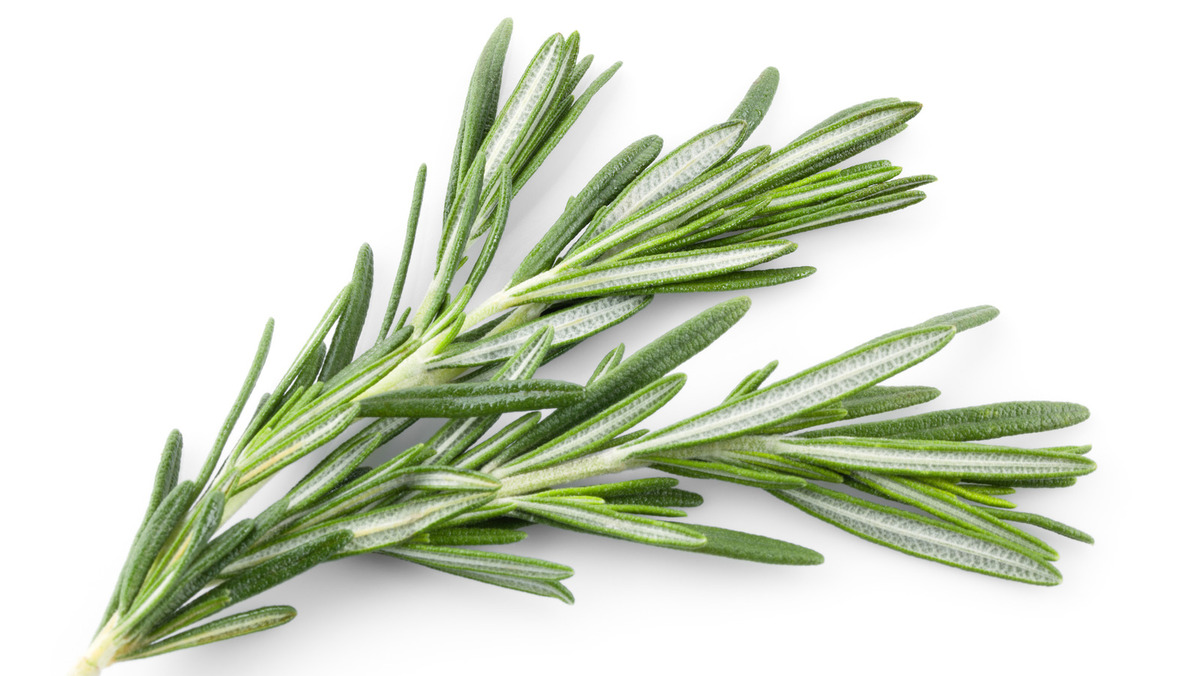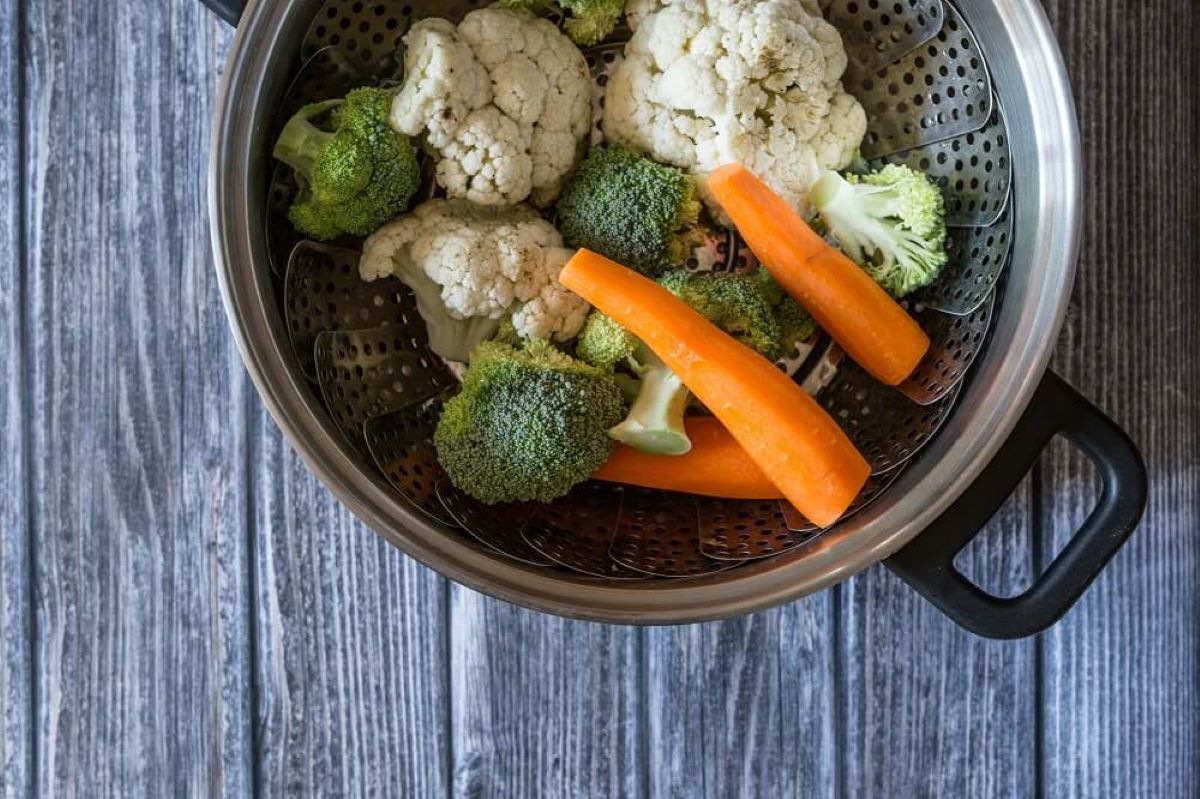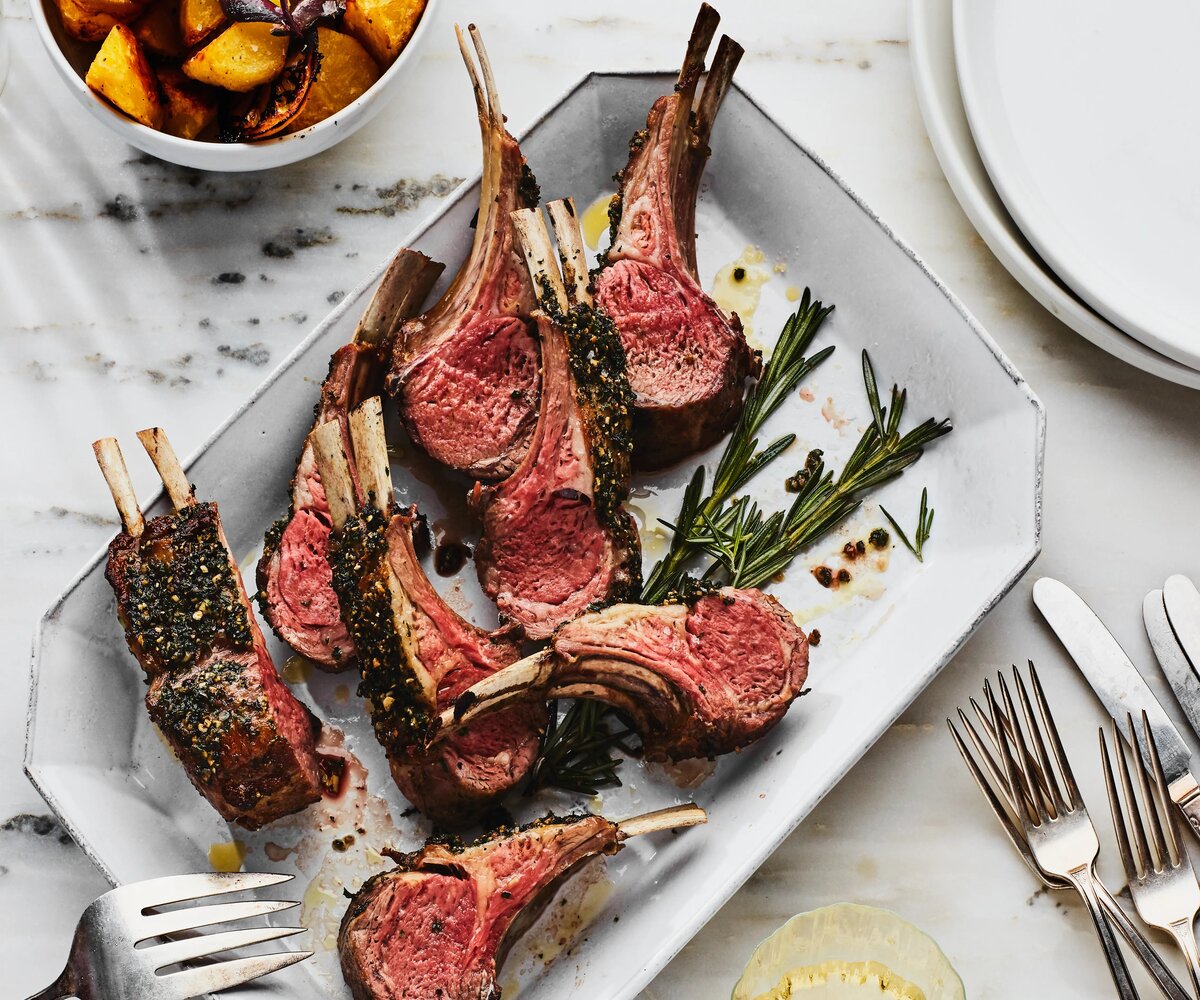Home>Types of Gardening>Edible Gardening>What Type Of Rosemary Is Best For Cooking


Edible Gardening
What Type Of Rosemary Is Best For Cooking
Published: January 28, 2024
Discover the best types of rosemary for your culinary creations with our guide to edible gardening. Find out which variety is perfect for cooking delicious meals.
(Many of the links in this article redirect to a specific reviewed product. Your purchase of these products through affiliate links helps to generate commission for Chicagolandgardening.com, at no extra cost. Learn more)
Table of Contents
Introduction
When it comes to edible gardening, having fresh herbs at your fingertips can take your culinary skills to the next level. One versatile herb that no kitchen should be without is rosemary. Known for its fragrant aroma and pine-like flavor, rosemary is a staple in Mediterranean cuisine and can elevate the taste of various dishes.
Whether you’re an experienced cook or just starting your culinary journey, choosing the right type of rosemary for cooking can make a significant difference in the flavor and aroma of your dishes. With a multitude of rosemary varieties available, each with its own unique characteristics, it’s essential to understand which ones are best suited for culinary purposes.
In this article, we will explore the different types of rosemary that are ideal for cooking. From Tuscan Blue Rosemary to Huntington Carpet Rosemary, we’ll cover a wide range of options to cater to every gardener’s preferences and needs.
So, whether you’re planning to grow rosemary in your garden or looking to plant it in containers on your balcony, read on to discover the best rosemary varieties that will enhance your cooking adventures.
Types of Rosemary for Cooking
Not all rosemary varieties are created equal when it comes to culinary use. Some varieties have stronger flavors, while others offer unique aromas that complement specific dishes. Here are some of the best types of rosemary for cooking:
- Tuscan Blue Rosemary: This variety is known for its robust flavor and is perfect for adding depth to roasted meats and vegetables. Its resinous leaves and strong aroma make it a popular choice in Italian cuisine.
- BBQ Rosemary: As the name suggests, this rosemary variety is perfect for use in barbecues and grilling. Its smoky flavor adds a delicious twist to marinades, rubs, and basting sauces.
- Spice Island Rosemary: With its potent flavor and fragrance, Spice Island Rosemary is a favorite among chefs. It pairs well with various meats, stews, and soups, and its needle-like leaves make it easy to sprinkle over dishes as a garnish.
- Blue Spires Rosemary: Blue Spires is a versatile rosemary variety that can be used in a wide range of dishes. Its robust flavor profile makes it a great addition to roasted potatoes, bread, and even desserts like rosemary-infused ice cream.
- Prostrate Rosemary: Unlike most rosemary varieties that grow upright, Prostrate Rosemary has trailing growth habit. Its low-growing form makes it ideal for ground cover in edible landscapes, and its mild flavor works well in marinades and herb butters.
- Arp Rosemary: Arp Rosemary is known for its exceptional cold-hardiness, making it suitable for colder regions. Its delicate flavor and aroma make it a great choice for seasoning delicate dishes, such as fish and poultry.
- Salem Rosemary: With its attractive grey-green leaves and strong flavor, Salem Rosemary is a popular choice among gardeners. Its robust taste is perfect for seasoning lamb, chicken, and roasted vegetables.
- Golden Rain Rosemary: This unique variety of rosemary features golden-yellow foliage, adding visual interest to your garden. Its subtle flavor pairs well with chicken, pork, and even cocktails.
- Huntington Carpet Rosemary: As a low-growing and spreading variety, Huntington Carpet Rosemary is perfect for cascading over walls or spilling out of containers. Its delicate flavor makes it ideal for seasoning lighter dishes and salads.
By choosing the right type of rosemary for your cooking needs, you can enhance the flavor and aroma of your dishes, adding a touch of freshness and complexity.
Tuscan Blue Rosemary
Tuscan Blue Rosemary is a popular and widely used variety for cooking due to its robust flavor and aromatic properties. This variety of rosemary is native to the Mediterranean region and is commonly found in Italian cuisine.
One of the key characteristics of Tuscan Blue Rosemary is its resinous leaves, which contain aromatic oils that contribute to its distinct flavor. The leaves are needle-like and have a deep green color, adding a touch of elegance to any dish.
The strong and bold flavor of Tuscan Blue Rosemary makes it a perfect choice for adding depth to roasted meats and vegetables. It pairs well with lamb, beef, and poultry, infusing them with its unmistakable pine-like flavor. Sprinkling fresh rosemary leaves over roasted potatoes or vegetables before cooking will elevate their taste and aroma.
In addition to its culinary uses, Tuscan Blue Rosemary can also be used as a fragrant herb for aromatherapy or as an ornamental plant in gardens. Its tall and upright growth habit makes it a striking addition to herb gardens, and its aromatic foliage releases a pleasant scent when brushed against.
When growing Tuscan Blue Rosemary, it thrives in well-drained soil and requires full sun exposure. Regular pruning will help maintain its shape and encourage bushier growth. It is a hardy plant that can tolerate drought conditions once established, making it suitable for various climates.
To harvest Tuscan Blue Rosemary for cooking, simply snip off the fresh sprigs just before you need them. The oils and flavors are most potent when the leaves are just starting to mature. You can finely chop or crush the leaves to release their essential oils or use whole sprigs for infusing flavor into soups, stews, or marinades.
Overall, Tuscan Blue Rosemary is a versatile and flavorful herb that adds depth and complexity to a wide range of dishes. Its culinary uses, combined with its ornamental appeal, make it a must-have herb in any edible garden.
BBQ Rosemary
When it comes to outdoor cooking and grilling, BBQ Rosemary is the perfect variety to enhance the flavor of your dishes. This particular type of rosemary is specifically bred for its smoky and aromatic qualities, making it an excellent choice for barbecues and grilled meats.
BBQ Rosemary has a robust flavor profile that adds a unique twist to your marinades, rubs, and basting sauces. Its needle-like leaves are packed with essential oils, which are released when exposed to heat, infusing your grilled dishes with a delightful smokiness.
This variety of rosemary is characterized by its sturdy growth and bushy foliage, which makes it easy to harvest. The woody stems are perfect for using as skewers for kebabs, adding an extra layer of flavor as they impart their aromatic oils into the food during grilling.
To make the most of BBQ Rosemary, try incorporating it into your homemade barbecue sauce. Chop up the leaves and mix them with your favorite sauce recipe to elevate its smoky flavor. You can also use whole rosemary sprigs as a fragrant and decorative garnish on grilled meats.
When growing BBQ Rosemary, it prefers well-drained soil and full sun exposure. Regular watering is essential, especially during dry periods, to ensure healthy growth. Additionally, pruning the plant will encourage bushier growth and help maintain its shape.
For harvesting BBQ Rosemary, simply snip off fresh sprigs just before using them in your barbecue or grilling recipes. The leaves are most aromatic and flavorful when they are young and tender. Remember to remove any woody stems and use only the leafy portion for cooking.
Whether you’re grilling chicken, pork, beef, or even vegetables, BBQ Rosemary adds a delightful smoky flavor that will take your barbecue game to the next level. Its distinct aroma and robust taste make it a favorite among outdoor cooking enthusiasts.
Spice Island Rosemary
Spice Island Rosemary is a variety of rosemary that is highly regarded for its strong flavor and aromatic properties. This particular type of rosemary lends itself well to a wide range of culinary applications, making it a valuable addition to any kitchen garden.
Known for its potent flavor and fragrance, Spice Island Rosemary is a favorite among professional chefs and home cooks alike. The leaves of this variety are needle-like and have a deep green color, indicating their high concentration of essential oils. The oils are responsible for the robust flavor and aroma that make this rosemary variety stand out.
Spice Island Rosemary pairs exceptionally well with meats, adding a delightful herbal note and enhancing the overall taste of dishes. It is particularly well-suited for seasoning lamb, beef, and game meats. The strong flavor of this rosemary creates a perfect balance when used in marinades, rubs, or as a finishing touch on grilled or roasted meats.
In addition to meat dishes, Spice Island Rosemary can also be used to elevate the flavors of stews, soups, and even bread. A sprinkle of freshly chopped rosemary leaves can add a pop of freshness and complexity to your favorite recipes. It can also be used as a garnish to enhance the visual appeal of your dishes.
When cultivating Spice Island Rosemary, it prefers well-draining soil and plenty of sunlight. This variety is known to be more tolerant of cooler temperatures compared to other rosemary varieties, making it suitable for a wider range of climates. Regular pruning will help maintain the plant’s shape and encourage bushier growth.
Harvesting Spice Island Rosemary is a simple process. When the plant is mature enough, snip off the fresh sprigs just before you need them. The flavor and aroma of the leaves are most potent when they are young and tender. You can use the leaves whole or chop them up to release their essential oils.
With its strong flavor and aromatic properties, Spice Island Rosemary is a go-to herb for adding depth and complexity to a variety of dishes. Whether you’re a seasoned chef or a home cook looking to elevate your culinary creations, this rosemary variety will not disappoint.
Blue Spires Rosemary
Blue Spires Rosemary is a versatile and flavorful variety that offers a unique twist to your cooking endeavors. With its robust flavor and attractive appearance, Blue Spires Rosemary is a popular choice among gardeners and chefs alike.
This variety of rosemary features deep green, needle-like leaves that are packed with aromatic oils. What sets Blue Spires Rosemary apart is its mild, yet distinct flavor profile. The flavor is slightly more delicate compared to other rosemary varieties, making it suitable for a wide range of dishes.
Blue Spires Rosemary is a versatile herb that can be used in various culinary applications. Its robust flavor complements roasted potatoes, bread, and even desserts, like rosemary-infused ice cream. The leaves can be finely chopped and added to marinades, dressings, or sauces to infuse a delicate herbal note.
Not only does Blue Spires Rosemary enhance the taste of your dishes, but it also adds an enchanting visual element to your garden. The plant grows in an upright and bushy manner, reaching a height of about 3-4 feet. The woody stems and green foliage create a beautiful contrast against other plants in your herb garden.
When it comes to growing Blue Spires Rosemary, it thrives in well-drained soil and requires plenty of sunlight. Regular pruning will help maintain the shape of the plant and encourage bushier growth. This variety is known to be drought-tolerant once established, making it suitable for regions with dry climates.
Harvesting Blue Spires Rosemary is a simple task. Snip off fresh sprigs just before you need them, ensuring that you leave enough foliage for the plant to continue growing. The essential oils and flavors of the leaves are most potent when they are young and vibrant, so be sure to use them at their peak.
Overall, Blue Spires Rosemary is a versatile and flavorful herb that adds a touch of elegance to your culinary creations. Its mild yet distinct flavor, combined with its attractive growth habit, make it a favorite among gardeners and food enthusiasts alike.
Prostrate Rosemary
Prostrate Rosemary, also known as creeping rosemary, is a unique variety that offers a different growth habit compared to its upright counterparts. This trailing form of rosemary is highly valued for its ground-covering properties and culinary uses.
Unlike the typical upright rosemary varieties, Prostrate Rosemary has a low-growing and cascading growth habit. Its long stems spread along the ground, creating a lush carpet of aromatic foliage. This makes it an excellent choice for edging garden beds, filling in gaps between pavers, or cascading over walls or hanging baskets.
In addition to its ornamental value, Prostrate Rosemary also offers a mild and pleasant flavor that is perfect for culinary purposes. The leaves of this variety have a subtle pine-like taste and aroma, adding a delicate herbal note to dishes without overpowering the other flavors.
Prostrate Rosemary works well as a seasoning herb, particularly in marinades, rubs, and herb butters. It complements a wide range of meats and vegetables and adds a subtle hint of freshness to salads and dressings. The foliage can also be used as a decorative garnish, enhancing the presentation of your culinary creations.
When it comes to growing Prostrate Rosemary, it prefers well-drained soil and full sun exposure. This variety is known to be resilient and drought-tolerant once established, making it a suitable option for gardens with hot and dry climates. Regular pruning will help maintain its shape and encourage bushier growth.
Harvesting Prostrate Rosemary is a simple process. The best time to harvest is when the plant is actively growing. Snip off fresh sprigs just before using them in your recipes. As with other rosemary varieties, the leaves are most aromatic and flavorful when they are young and tender.
Whether you’re looking to add an attractive ground cover to your garden or seeking a mild and versatile herb for your culinary adventures, Prostrate Rosemary is an excellent choice. Its cascading growth habit and delicate flavor make it a valuable addition to any garden or kitchen.
Arp Rosemary
Arp Rosemary is a hardy and versatile variety that is well-known for its exceptional cold-hardiness. This rosemary variety is a favorite among gardeners in colder regions, as it can withstand harsh winter temperatures without sacrificing its flavor or fragrance.
One of the key features of Arp Rosemary is its delicate flavor and aroma. The leaves of this variety have a subtle and slightly sweeter taste compared to other rosemary varieties. This makes Arp Rosemary an excellent choice for seasoning delicate dishes, such as fish, poultry, and vegetables.
In addition to its culinary uses, Arp Rosemary also serves as an attractive evergreen shrub in the garden. It has a dense and bushy growth habit, reaching a height of around 3-4 feet. The woody stems and needle-like foliage provide a lovely backdrop for other garden plants.
When it comes to cultivation, Arp Rosemary prefers well-drained soil and plenty of sunlight. It can tolerate a wide range of soil conditions, from sandy to clayey. Regular pruning helps maintain its shape and encourages bushier growth. This variety is known to be drought-tolerant, making it suitable for regions with dry or arid climates.
Harvesting Arp Rosemary is a simple process. Snip off fresh sprigs just before you need them, ensuring you leave enough foliage for the plant to continue thriving. The essential oils and flavors of the leaves are most potent when they are young and tender, so harvesting them at their peak will ensure the best taste and aroma.
Arp Rosemary is a reliable and resilient herb that brings both flavor and beauty to your garden. Whether you’re seeking a cold-hardy rosemary variety or a delicate herb for culinary creations, Arp Rosemary is sure to impress with its hardiness and subtle taste.
Salem Rosemary
Salem Rosemary is a popular variety known for its attractive appearance and strong flavor. With its robust taste and aromatic properties, this rosemary variety is a flavorful addition to a variety of dishes.
One of the distinguishing features of Salem Rosemary is its attractive grey-green foliage. The needle-like leaves are densely packed and have a soft texture, adding an elegant touch to gardens and culinary creations alike.
When it comes to flavor, Salem Rosemary does not disappoint. It has a strong and distinctive pine-like taste that adds depth and complexity to dishes. This rosemary variety is often used to season lamb, chicken, and roasted vegetables, as it infuses them with its bold and fragrant flavor.
Salem Rosemary can also be used to enhance the flavors of sauces, stews, and marinades. A sprinkle of fresh chopped leaves can take your recipes to the next level, leaving behind a flavorful and aromatic profile.
While Salem Rosemary is appreciated for its culinary uses, it also serves as an ornamental plant in gardens. Its upright growth habit and grey-green foliage can provide year-round interest and act as a backdrop for other garden plants. Additionally, the plant produces delicate blue flowers in the spring, attracting pollinators and adding a burst of color to the landscape.
When it comes to cultivation, Salem Rosemary prefers well-drained soil and ample sunlight. It is relatively drought-tolerant and does not require excessive watering. Regular pruning will help maintain its shape and encourage bushier growth.
For harvesting Salem Rosemary, snip off fresh sprigs just before using them in your recipes. The leaves are most flavorful when they are young and tender. Chop the leaves finely or use whole sprigs to add a punch of flavor to your culinary creations.
Overall, Salem Rosemary is a versatile and flavorful herb that offers both visual appeal and culinary excellence. It’s a reliable choice for those seeking a strong-flavored rosemary variety to elevate their dishes and enhance the beauty of their gardens.
Golden Rain Rosemary
Golden Rain Rosemary, with its vibrant golden-yellow foliage, is a visually striking and unique variety of rosemary. This ornamental herb not only adds a pop of color to your garden but also offers a subtle and delightful flavor to your culinary creations.
The golden-yellow leaves of Golden Rain Rosemary provide a beautiful contrast against its deep green stems, creating a vibrant and eye-catching display in any garden or container. This variety is valued for its decorative appeal and is often used as an accent plant or as a statement piece in herb gardens and landscapes.
Although its primary appeal lies in its ornamental value, Golden Rain Rosemary is also known for its mild flavor. The leaves have a subtle herbal taste with a hint of spiciness, making it a versatile herb in the kitchen. It pairs well with a wide range of dishes and can be used to enhance the flavors of chicken, pork, or even cocktails.
In addition to its culinary uses, Golden Rain Rosemary can also be used to infuse oils and vinegars, adding a touch of color and flavor to your homemade creations. The vibrant leaves can be dried and stored for later use, allowing you to enjoy the unique taste and appearance of this rosemary variety throughout the year.
Cultivating Golden Rain Rosemary is similar to other rosemary varieties. It prefers well-drained soil and full sun exposure. Regular pruning will help maintain its shape and encourage healthy growth. It is a hardy plant that can tolerate a variety of conditions, making it suitable for both beginner and experienced gardeners alike.
When it comes to harvesting Golden Rain Rosemary, snip off fresh sprigs just before using them in your recipes. The leaves are most flavorful when they are young and tender. You can use them whole or chop them up to release their essential oils and unique flavor.
In summary, Golden Rain Rosemary is a visually striking and versatile herb that adds both color and flavor to your garden and culinary creations. Whether you’re looking to spice up your dishes or add a decorative element to your garden, Golden Rain Rosemary won’t disappoint.
Huntington Carpet Rosemary
Huntington Carpet Rosemary, also known as creeping rosemary, is a unique and low-growing variety that offers both ornamental and culinary benefits. This trailing form of rosemary is highly appreciated for its ability to create a dense and lush groundcover in gardens.
One of the key features of Huntington Carpet Rosemary is its prostrate growth habit. Its trailing stems can spread up to several feet, creating a dense carpet of aromatic foliage. This makes it an excellent choice for filling in gaps between pavers, cascading over walls, or as an attractive edging plant.
In addition to its ornamental value, Huntington Carpet Rosemary also offers a mild and pleasant flavor that enhances a variety of culinary dishes. The leaves of this variety have a delicate and slightly sweet taste, making it suitable for seasoning lighter fare such as fish, poultry, salads, and herb butters.
When cultivating Huntington Carpet Rosemary, it prefers well-drained soil and full sun exposure. Regular pruning can help maintain its shape and control its growth, although its trailing habit lends itself well to a more natural and untamed appearance. This variety is known to be drought-tolerant once established, making it suitable for gardens with dry or arid climates.
Harvesting Huntington Carpet Rosemary is a straightforward process. Simply snip off fresh sprigs just before using them in your culinary creations. The leaves are most aromatic and flavorful when they are young and vibrant, so harvesting them at their peak ensures the best taste and aroma.
Not only does Huntington Carpet Rosemary add a touch of beauty and fragrance to your garden, but it also provides a versatile herb that can be used fresh or dried for various culinary applications.
In summary, Huntington Carpet Rosemary is a valuable addition to any garden, providing both ornamental beauty and flavorful culinary benefits. Its trailing growth habit and mild flavor make it a versatile and desirable herb for a range of garden styles and cooking preferences.
Conclusion
Choosing the right type of rosemary for cooking can significantly enhance the flavor and aroma of your dishes. From robust and bold varieties like Tuscan Blue and BBQ Rosemary to more delicate options such as Arp and Huntington Carpet, each type offers its own unique qualities and benefits.
Whether you’re grilling, roasting, or seasoning a variety of dishes, the different varieties of rosemary provide versatile options for enhancing your culinary adventures. Tuscan Blue Rosemary adds a robust flavor to roasted meats and vegetables, while BBQ Rosemary infuses smoky notes into marinades and basting sauces.
If you’re looking for a more subtle flavor, varieties like Arp and Salem Rosemary provide a milder taste that beautifully accentuates delicate dishes like fish and poultry. For a burst of visual appeal, Golden Rain Rosemary adds a touch of vibrant golden hues to your garden while adding a subtle hint of flavor to your recipes.
For groundcover or cascading options, Prostrate Rosemary and Huntington Carpet Rosemary offer unique growth habits that not only create attractive green carpets but also provide a pleasant taste for seasoning lighter fare.
Regardless of your choice, rosemary is a versatile and aromatic herb that can take your cooking to new heights. The key to successfully utilizing rosemary in your culinary creations is to harvest the leaves at their peak, ensuring the most potent flavors and fragrances.
Whether you’re a seasoned chef or a passionate home cook, incorporating fresh rosemary into your dishes will add depth, complexity, and a touch of freshness. So, go ahead and experiment with different varieties of rosemary to discover your favorites and embark on a flavorful culinary journey with this delicious herb.






